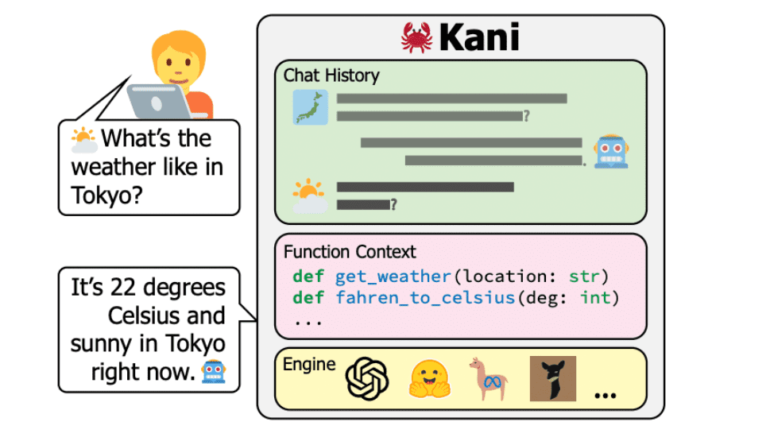TL;DR:
- Kani, a new open-source framework, revolutionizes language model applications.
- It offers flexibility and customization, liberating developers from rigid constraints.
- Kani caters to academics, enthusiasts, and professionals alike.
- Its simplicity, Python 3.10+ compatibility, and pip installation simplify the development process.
- Kani introduces the ‘Kani’ unit, facilitating interaction with linguistic models.
- It ensures dialogue context adherence and seamless model transitions.
- Kani empowers language models to access callable functions.
Main AI News:
The landscape of large language model applications is evolving rapidly, captivating audiences with their astonishing capabilities. These applications, powered by cutting-edge technology, are continuously pushing the boundaries of what is possible in artificial intelligence. They introduce features like tool usage tracking and retrieval augmentation, making waves in the AI community. However, the existing frameworks that support these applications often come with rigid constraints, dictating how developers format prompts and limiting customization and reproducibility.
Enter Kani, a groundbreaking open-source framework developed by a team of researchers at the University of Pennsylvania. Kani is poised to disrupt the status quo with its lightweight, flexible, and model-agnostic approach to building language model applications. With a focus on core elements such as model interaction, chat management, and robust function calling, Kani empowers developers to create sophisticated applications with ease.
What sets Kani apart is its adaptability and customizability. Unlike existing frameworks, Kani doesn’t shackle developers with predefined structures or limitations. Instead, it provides a toolkit of building blocks that can be effortlessly modified to meet unique demands and requirements. The team behind Kani has gone the extra mile by offering comprehensive documentation, ensuring that developers have all the resources they need to unlock the full potential of this framework.
Kani isn’t just for a niche audience; it caters to a broad spectrum of users. Whether you’re an academic, an enthusiast, or a business professional, Kani has something to offer. For researchers, Kani enhances the reproducibility of their work while granting fine-grained control over language model applications. Even when working with powerful models like GPT-4, Kani enables users to dive into app development with just a few lines of code. Industry professionals, especially those in fields like chat management and function management, will find Kani’s versatility and durability invaluable.
One of Kani’s standout features is its simplicity. Compatible with Python 3.10+ and installable via pip, it streamlines language model installation and querying. It comes with core dependencies and optional extras, including integration with the OpenAI engine. At the heart of the Kani framework lies the ‘Kani’ itself – the fundamental processing unit. Users interact with and manipulate various Kani objects, comprising three essential components: the inference engine, chat history, and function context.
In the world of language model applications, inference engines are the bridge that connects Kani objects with linguistic models. This seamless interaction allows developers to effortlessly switch between different models without rewriting their application’s code. Kani keeps a vigilant eye on token counts and topic transitions, ensuring that dialogues stay within the model’s boundaries. Moreover, Kani enables language models to access callable functions, validate function calls, execute the appropriate code, and return results to the inference engine.
Conclusion:
Kani’s introduction signifies a significant shift in the market for language model applications. Its flexibility and customizability offer developers unprecedented freedom, potentially leading to a surge in innovative and tailored AI solutions across various industries. The simplicity and compatibility of Kani make it accessible to a broader audience, which could further accelerate the adoption of language models in business applications. The future of AI-powered solutions looks promising with Kani at its core.

